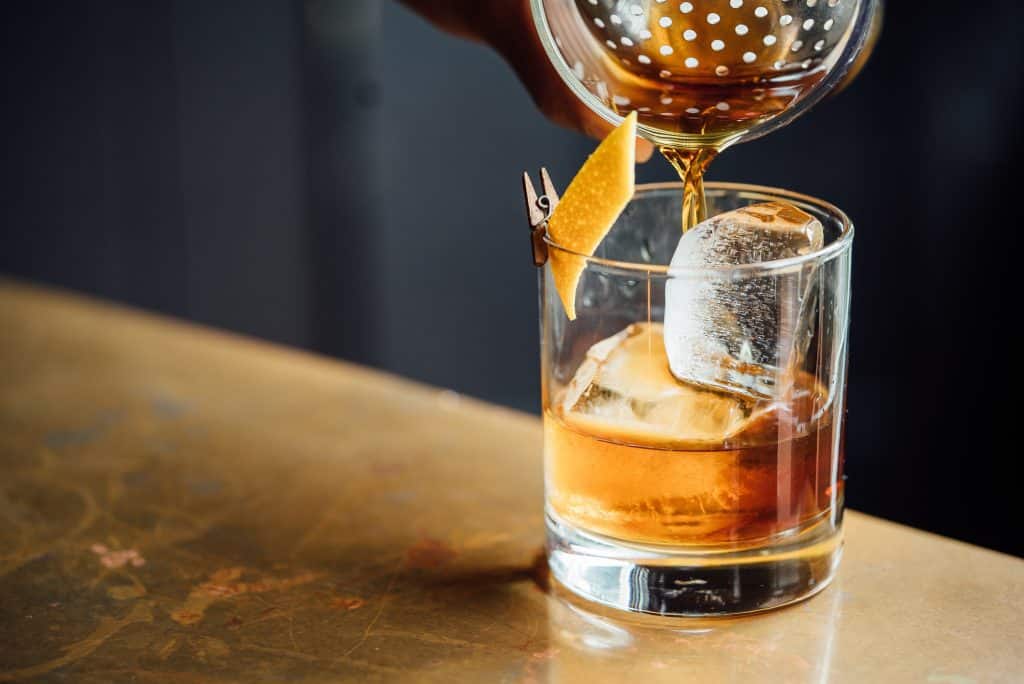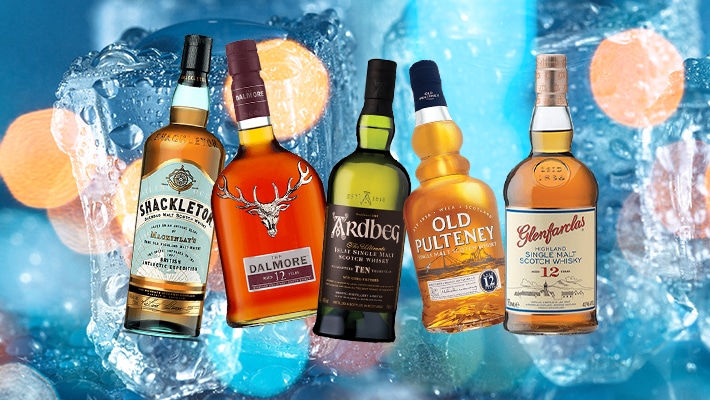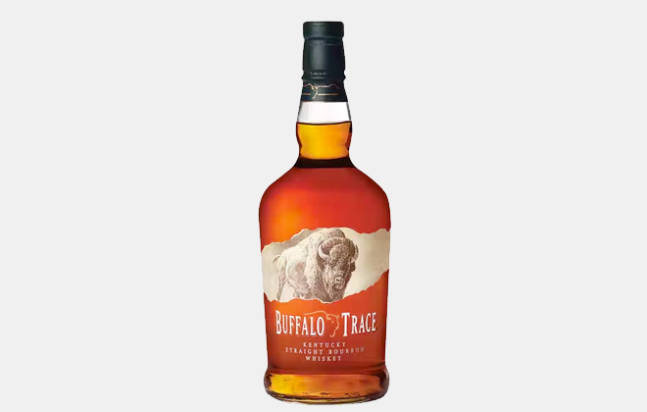Ready to discover the perfect whiskey to sip on the rocks? Look no further, as we delve into the world of this beloved spirit to uncover which bottle reigns supreme. We all know that finding the right whiskey can be a daunting task, with seemingly endless options to choose from. But fear not, as we take you on a journey through taste and tradition, guiding you towards the ultimate chilled whiskey experience. So, grab your favorite glass and let’s embark on this delicious adventure!
Factors to Consider
When it comes to choosing the best whiskey, there are several factors that we need to take into consideration. Each factor has the potential to greatly impact the flavor and overall experience of enjoying a glass of whiskey. By understanding these factors and their significance, we can make a more informed decision and find a whiskey that perfectly suits our preferences. Let’s dive into these factors and explore what each one entails.
Whiskey Type
The first factor to consider is the type of whiskey. Whiskey is a broad category that encompasses various styles and traditions from different parts of the world. Each type of whiskey offers a unique flavor profile and production method. Let’s explore some of the most popular types of whiskey:
Scotch Whiskey
Scotch whiskey is widely regarded as one of the finest and most distinguished whiskeys in the world. Scotland is the birthplace of Scotch whiskey, and it is known for its rich history and traditional production methods. Scotch whiskey is typically made from malted barley and aged for a minimum of three years in oak barrels. It is known for its complex flavors, ranging from smoky and peaty to fruity and floral.
Bourbon Whiskey
Bourbon whiskey is an American classic, often associated with the Southern United States. To be considered bourbon, the whiskey must be made primarily from corn and aged in new charred oak barrels. It has a distinctly sweet and rich flavor profile, characterized by notes of caramel, vanilla, and oak. Bourbon whiskey is known for its smoothness and is a popular choice for both sipping and mixing in cocktails.
Irish Whiskey
Irish whiskey has a long and storied history, rooted in ancient Celtic traditions. Unlike Scotch whiskey, Irish whiskey is typically made from a mixture of malted and unmalted barley. It is known for its triple distillation process, which results in a smooth and approachable whiskey. Irish whiskey often exhibits light and fruity flavors, with hints of green apple, honey, and vanilla.
Canadian Whiskey
Canadian whiskey is known for its light and smooth character. It is often made from a blend of grains, including corn, rye, barley, and wheat. Canadian whiskey is typically aged for a minimum of three years in oak barrels, resulting in a mellow flavor profile. It is a versatile whiskey that can be enjoyed neat, on the rocks, or in a cocktail.
Japanese Whiskey
Japanese whiskey has gained international recognition in recent years for its exceptional quality and craftsmanship. Inspired by Scotch whiskey, Japanese distilleries have embraced traditional production methods and created their own unique style. Japanese whiskey is known for its balance and elegance, with flavors ranging from delicate and floral to rich and complex. It is a favorite among whiskey connoisseurs who appreciate its attention to detail and artistry.
This image is property of coolmaterial.com.
Age
The age of a whiskey refers to the length of time it has spent maturing in oak barrels. Aging is a crucial process that allows the whiskey to develop complexity and depth of flavor. Different age statements are used to indicate the maturity of a whiskey, and each brings its own characteristics to the table. Here are some common age statements you may come across:
Young Whiskey
Young whiskey, also known as “new make” or “white dog,” has spent the least amount of time aging in barrels. It often exhibits vibrant and raw flavors, with a stronger presence of the base grains used to make the whiskey. While young whiskey may lack the complexity and smoothness of its aged counterparts, it can offer a unique and bold drinking experience.
Mature Whiskey
Mature whiskey typically refers to whiskey that has been aged for a minimum of four to six years. At this stage, the whiskey begins to develop more rounded and balanced flavors. The harshness of the base grains starts to mellow, and the interaction with the oak barrels imparts additional notes of vanilla, caramel, and spice. Mature whiskey is a popular choice for those looking for a well-rounded and approachable drinking experience.
Aged Whiskey
Aged whiskey refers to whiskey that has been allowed to mature for an extended period, usually at least ten years or more. With age comes complexity and depth, as the whiskey evolves and takes on new characteristics from the oak barrels. Aged whiskey is often prized for its rich and nuanced flavors, with notes of dried fruit, leather, tobacco, and oak. For those seeking a truly exceptional sipping experience, aged whiskey is the way to go.
Non-Age Statement (NAS) Whiskey
In recent years, there has been a growing trend of non-age statement (NAS) whiskeys. These are whiskeys that do not carry an age statement on their label, indicating that they have been aged for an undisclosed amount of time. NAS whiskeys allow distilleries more flexibility in blending and flavor development. While the lack of an age statement may initially raise eyebrows, many NAS whiskeys have garnered praise and recognition for their exceptional quality and flavor profiles.
Region of Origin
The region in which a whiskey is produced can have a significant impact on its flavor profile. Different regions have their own unique climates, water sources, and production methods, all of which contribute to the distinctive characteristics of the whiskey. Let’s explore some of the key regions and their whiskey traditions:
Scotch Whiskey Regions
In Scotland, whiskey production is divided into different regions, each known for its specific style of Scotch whiskey. The regions include Highlands, Lowlands, Speyside, Islay, Campbeltown, and Islands. Highland whiskies are often known for their fruity and floral flavors, while Islay whiskies are famous for their peaty and smoky profiles. Each region offers its own distinct take on Scotch whiskey, making it a diverse and exciting category to explore.
Bourbon Whiskey Origins
Bourbon whiskey is primarily associated with the United States, particularly the state of Kentucky. However, it can be produced anywhere in the country. While Kentucky is known as the heartland of bourbon, other states such as Tennessee, Indiana, and New York also produce exceptional bourbons. The terroir of each region contributes to the flavor profile of the bourbon, creating subtle variations that whiskey enthusiasts appreciate.
Irish Whiskey Regions
In Ireland, whiskey production is not divided into discrete regions like in Scotland. However, there are notable distilleries located in different parts of the country, each with its own history and style. Distilleries such as Bushmills and Jameson have become synonymous with Irish whiskey. The pure and fresh water sources in Ireland, along with the triple distillation process, result in light and smooth whiskies that are enjoyed around the world.
Canadian Whiskey Origins
Canadian whiskey is produced throughout Canada, with distilleries located in various provinces. The climate and geography of each region impact the production and aging process, leading to diverse flavor profiles. Canadian whiskey is often characterized by its smoothness and lightness, making it an excellent choice for those who prefer a more subtle and approachable whiskey.
Japanese Whiskey Origins
Japanese whiskey is crafted in distilleries across Japan, which have gained recognition for their dedication to quality and craftsmanship. While the production practices may draw inspiration from Scotch whiskey, Japanese distilleries have developed their own unique style. With pristine water sources and meticulous attention to detail, Japanese whiskey has carved a niche for itself in the global whiskey market. The Yamazaki and Nikka distilleries are among the most renowned and respected in the industry.
This image is property of uproxx.com.
Distillation Process
The distillation process plays a crucial role in shaping the flavor profile of the whiskey. Distillation is the process of heating the fermented mash and separating the alcohol from the other components, such as water and grain solids. Different distillation methods can yield distinct flavors and textures. Let’s explore some common distillation processes used in whiskey production:
Pot Still
Pot still distillation is a traditional method that is often associated with Irish whiskey and Scotch malt whiskey. It involves using a pot still, a large copper vessel with a distinctive shape that allows for the separation and concentration of flavors. Pot still whiskey tends to have a rich and robust character, with a greater emphasis on the malted grains used in the mash.
Column Still
Column still, also known as Coffey still, is a continuous distillation method that allows for a high volume of whiskey production. It involves passing the fermented mash through a tall column, where vapor and liquid continuously separate. Column still whiskey is known for its smoothness and lightness, with a focus on the base grains used in the mash. This method is commonly used in bourbon and Canadian whiskey production.
Continuous Still
Continuous still, often referred to as a patent still, is another method of continuous distillation. It utilizes a different design and construction compared to the column still. Continuous still distillation allows for a high level of efficiency and consistency, producing large quantities of whiskey with a relatively inexpensive process. This method is commonly used in the production of blended whiskeys and grain whiskeys.
Single Distillation
Single distillation refers to the process of distilling the fermented mash only once. This method is often associated with traditional whiskey production, particularly in the production of Scotch whiskey. Single distillation allows for a bolder and more robust whiskey, with a greater preservation of the original flavors and characteristics of the grains.
Double Distillation
Double distillation is a method that involves distilling the fermented mash twice. This is a common practice in the production of many types of whiskey, including Irish whiskey and Scotch whiskey. Double distillation allows for a higher level of refinement and concentration of flavors, resulting in a smoother and more approachable whiskey.
Triple Distillation
Triple distillation is a process that involves distilling the fermented mash three times. This is a trademark of Irish whiskey production and is known for creating exceptionally smooth and refined spirits. Triple distillation allows for the removal of impurities and the production of a whiskey with a clean and delicate flavor profile.
Proof
The proof of a whiskey refers to its alcohol content and is typically expressed as a percentage or as a proof value. The alcohol content of whiskey can greatly influence its flavor, intensity, and overall drinking experience. Let’s explore the different levels of proof commonly found in whiskey:
Low Proof Whiskeys
Low proof whiskeys typically have an alcohol content of 40% ABV (alcohol by volume) or lower. These whiskeys are often preferred by those who enjoy a milder drinking experience or who are new to whiskey. Low proof whiskeys can be smoother and more approachable, with less of a burn or intense flavor impact.
High Proof Whiskeys
High proof whiskeys, on the other hand, have an alcohol content above 50% ABV. These whiskeys are known for their intensity and boldness, offering a robust and powerful flavor profile. High proof whiskeys can pack a punch and may require dilution or mixing to fully appreciate their complexity.
Cask Strength Whiskeys
Cask strength whiskeys are bottled at the same proof as they were when they were taken from the cask. These whiskeys can vary in strength but often have an alcohol content above 50% ABV. Cask strength whiskeys offer a unique and unadulterated drinking experience, as they have not been diluted or adjusted before bottling. They provide an opportunity to taste the whiskey exactly as it was when it left the barrel.
This image is property of coolmaterial.com.
Flavor Profile
One of the most exciting aspects of exploring different whiskeys is discovering the wide range of flavors they have to offer. Whiskey can vary greatly in terms of its flavor profile, from smoky and peaty to sweet and fruity. Let’s explore some of the common flavor profiles you may encounter when sampling different whiskeys:
Peaty and Smoky
Peaty and smoky whiskeys, often associated with Islay in Scotland, offer a distinct and captivating flavor experience. These whiskeys are made using malted barley that has been dried over a peat fire, resulting in a smoky and earthy aroma. Peaty and smoky whiskeys can be an acquired taste, with notes of iodine, seaweed, and bonfire ash.
Sweet and Fruity
Sweet and fruity whiskeys, such as certain bourbon or Irish whiskey expressions, are characterized by their pleasant and approachable flavors. These whiskeys often exhibit notes of caramel, vanilla, honey, ripe fruits, and citrus. The sweetness can be well-balanced or more pronounced, depending on the specific whiskey and its production methods.
Spicy and Bold
Spicy and bold whiskeys, commonly found in rye whiskeys or certain Scotch expressions, offer a lively and invigorating experience. These whiskeys are known for their assertive flavors, with notes of black pepper, cinnamon, cloves, and ginger. The spiciness can add complexity and a touch of heat to the whiskey, making it a favorite among those who enjoy a more adventurous drinking experience.
Balanced and Smooth
Balanced and smooth whiskeys are often considered crowd-pleasers, appealing to a wide range of palates. These whiskeys are characterized by their harmonious flavor profiles, with no single element overpowering the others. They often exhibit a well-rounded combination of sweet, spicy, and oaky notes, creating a pleasant and easy-drinking experience.
Light and Floral
Light and floral whiskeys, commonly found in certain Irish or Japanese expressions, offer a delicate and nuanced flavor experience. These whiskeys often exhibit gentle floral aromas, along with notes of pear, apple, citrus, and a touch of spice. Light and floral whiskeys are known for their elegance and subtlety, making them a favorite among those who appreciate a more delicate drinking experience.
Personal Taste Preferences
While the factors mentioned above play a significant role in choosing the right whiskey, personal taste preferences should not be overlooked. Whiskey is a subjective experience, and what one person may enjoy, another may not. When considering your preferences, here are a few factors to keep in mind:
Individual Preferences
We all have unique tastes and preferences when it comes to whiskey. Some may prefer a bold and smoky Scotch whiskey, while others may lean towards a milder and sweeter bourbon. There is no right or wrong choice when it comes to personal preference. It’s all about discovering what brings you joy and satisfaction in a glass of whiskey.
Experimentation
Don’t be afraid to step outside your comfort zone and try different styles of whiskey. Whiskey is a vast world with countless expressions and flavor profiles waiting to be explored. Venture into different regions, ages, or distillation processes to discover new favorites. The journey of whiskey appreciation is an ongoing process, and the joy is often found in the exploration.
Ice vs. Chilled Glass
When it comes to serving whiskey, there is an ongoing debate about whether to add ice or chill the glass. Some whiskey enthusiasts argue that adding ice can dilute the flavors and mask the complexity of the whiskey. On the other hand, chilling the glass can help to mellow the whiskey without dilution. Ultimately, it comes down to personal preference. Experiment with both methods and see which one enhances your enjoyment of the whiskey.
This image is property of assets3.thrillist.com.
Recommendations
With so many options available, choosing the best whiskey can be a daunting task. To help narrow down your choices, here are some recommendations for different categories and occasions:
Best Whiskey for Beginners
For those new to the world of whiskey, a good starting point would be a smooth and approachable Irish whiskey like Jameson or a bourbon like Maker’s Mark. These whiskeys offer a balanced flavor profile and are excellent for sipping or mixing in cocktails.
Best Value Whiskey
When it comes to value, there are many great options to choose from. One standout choice is the Buffalo Trace Bourbon, which offers exceptional quality at an affordable price. Other value options include Bulleit Bourbon, Glenfiddich 12 Year Old, or Canadian Club.
Best Whiskey for Connoisseurs
For those who appreciate the finer details and craftsmanship of whiskey, exploring aged Scotch whiskies such as Glenlivet 18 Year Old or Macallan 18 Year Old would be a rewarding experience. Additionally, rare and limited-edition releases from distilleries like Ardbeg or Yamazaki can offer a truly exceptional drinking experience.
Best Whiskey for Cocktails
When it comes to cocktails, a versatile and flavorful whiskey is key. Rye whiskeys, such as Rittenhouse or Sazerac, offer a spicy kick that pairs well with classic cocktails like the Old Fashioned or Manhattan. Bourbons like Woodford Reserve or Four Roses are also popular choices for their robust flavor profiles.
Best Whiskey for Sipping
If you prefer sipping your whiskey neat or with a splash of water, consider exploring aged whiskeys like Glenfiddich 18 Year Old or Redbreast 12 Year Old. These whiskies offer a complex and refined flavor profile that can be savored slowly, allowing you to fully appreciate the depth of their character.
Conclusion
Choosing the best whiskey is a personal journey that requires exploration and an open mind. By considering factors such as whiskey type, age, region of origin, distillation process, proof, and flavor profile, you can narrow down your options and find a whiskey that perfectly suits your preferences. Remember, whiskey appreciation is subjective, and what matters most is finding a whiskey that brings you joy and satisfaction with every sip. So, whether you’re a fan of peaty Scotch whiskies, smooth bourbons, or delicate Japanese expressions, embrace the diversity of whiskey and enjoy the delightful flavors it has to offer. Sláinte!
This image is property of uproxx.com.





